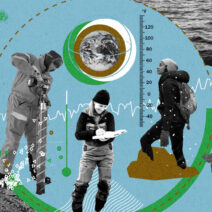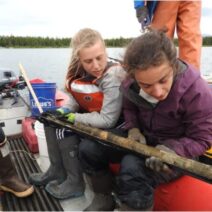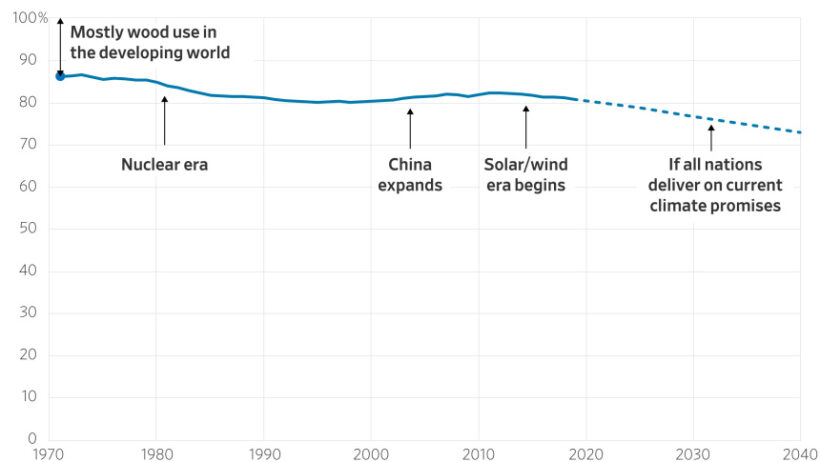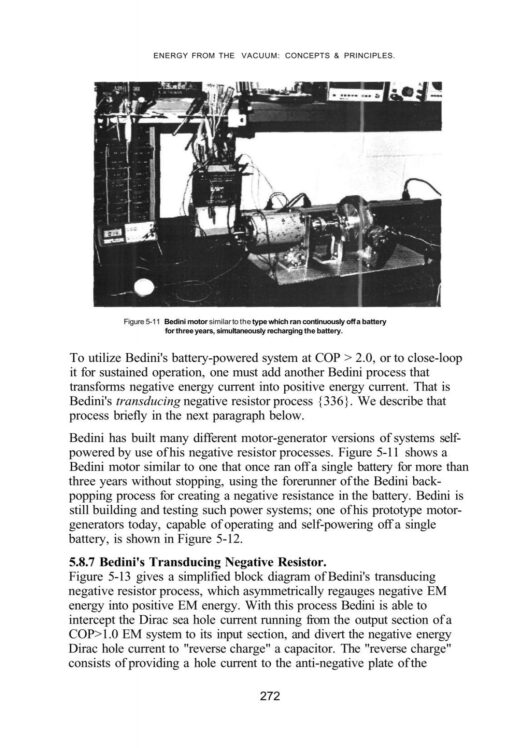In the wake of the COVID-19 pandemic, a fascinating juxtaposition emerged: while nations shuttered their economies and people sheltered in place, there were noticeable reductions in greenhouse gas emissions. The world collectively took a breath, and some optimistically posited that this drastic curtailment of human activity might also translate into a respite for the environment. However, why did global warming not halt its inexorable march during these unprecedented lockdowns?
At first glance, one might ponder: could a temporary reduction in carbon emissions sufficiently alter the atmospheric trajectory we’ve been on for decades? The answer is rather complex and multi-faceted, as it involves several interrelated factors encompassing both human behavior and natural processes.
Global warming is primarily driven by the accumulation of greenhouse gases, especially carbon dioxide (CO2), in the atmosphere. These gases trap heat and have been irreversibly altering our climate for generations. Although emissions saw a temporary dip during lockdowns, the fundamental mechanisms behind climate change remained intact. The carbon released into our atmosphere depends not just on daily activities but also on the larger industrial and systemic frameworks of energy production, transportation, and agriculture.
A playful question surfaces: what if humans collectively chose to experience a new way of living post-lockdown? It is an enticing notion, but the intricacies of modern life are such that habitual patterns are difficult to break. While air travel plummeted and vehicular traffic dwindled, essential services and industrial outputs continued to function, albeit at reduced capacity. Moreover, fossil fuel-driven energy systems remained operational, continually injecting CO2 into the atmosphere.
The rebound effect is another significant factor that demands attention. As restrictions eased, there was a palpable enthusiasm for travel and consumption—activities that had been largely curtailed. Studies indicate that, in many countries, emissions surged beyond pre-pandemic levels as people returned to ‘normal’ life, often engaging in more intensive forms of consumption to compensate for lost time. This behavior elucidates the psychological phenomenon of “bingeing” after a period of deprivation, revealing a paradox where the short-lived benefits of reduced emissions were negated by a collective rush to reclaim lost experiences.
Moreover, the pandemic underscored the fact that structural change is imperative for meaningful progress in combating climate change. Amid the temporary lockdowns, awareness of certain environmental issues did increase, yet in the absence of robust legislative action or cohesive international policy frameworks, these heightened perceptions did little to stem the tide of climate change. The need for systemic transformation—transitioning toward renewable energy sources, redefining consumption patterns, and advocating for sustainable urban planning—remains paramount.
Climate change doesn’t observe lockdowns; its momentum is firmly affixed to the timeliness of mitigative steps undertaken by global infrastructures. As alarming as it sounds, while emissions may plummet in times of crisis, the earth’s climate system behaves with a degree of latency. The greenhouse gases already present in the atmosphere will inflict warming effects for decades, if not centuries. Hence, the mere cessation in emissions won’t equate to immediate climate stabilization.
Let’s not overlook the other ramifications of the pandemic that indirectly impact climate change—deforestation rates surged in some regions due to the increased demand for agricultural land, while oceanic ecosystems endured pressure from intensified fishing as communities sought to sustain livelihoods in a time of economic uncertainty. Such activities undermine conservation efforts and raise critical questions regarding the future stewardship of our planet.
Equity issues also play a pivotal role in the climate crisis during and post-COVID. Vulnerable populations disproportionately bear the brunt of both the pandemic and climate change. Response measures should not only address the environment but must also seek to rectify inequalities. Those communities that are least responsible for emissions often suffer the harshest consequences, making it crucial to adopt a lens of justice in climate action.
So, what does this mean for the future? The challenge looms large. How can society create a shift that not only maintains the environmental awareness achieved during the pandemic but transforms it into lasting, actionable policies? The experiment of the lockdown provides an eye-opening context: a glimpse of potential future outcomes if habitual practices radically shift towards sustainability. It also serves as a grim reminder that the inertia underlying climate change is not easily reversed.
A comprehensive solution must incorporate the unlikely collaboration between individuals, businesses, and governments. Achieving significant climate objectives necessitates a paradigm shift—embracing renewable energy, investing in green technologies, and fostering a circular economy should become the new norm. If only society can harness the reflective pause provided by this global pandemic to ignite lasting change, moving forward with vigor and unity, we might sculpt a more resilient and sustainable future.
In conclusion, while COVID-19 instigated a temporary breathing space for our planet, it exemplified the urgent need for systemic reform rather than superficial fixes. As we navigate the post-lockdown world, let us not squander this moment. Instead, it is time to ask ourselves: how will we leverage the lessons learned during this crisis to forge a future that addresses both climate change and social equity?








